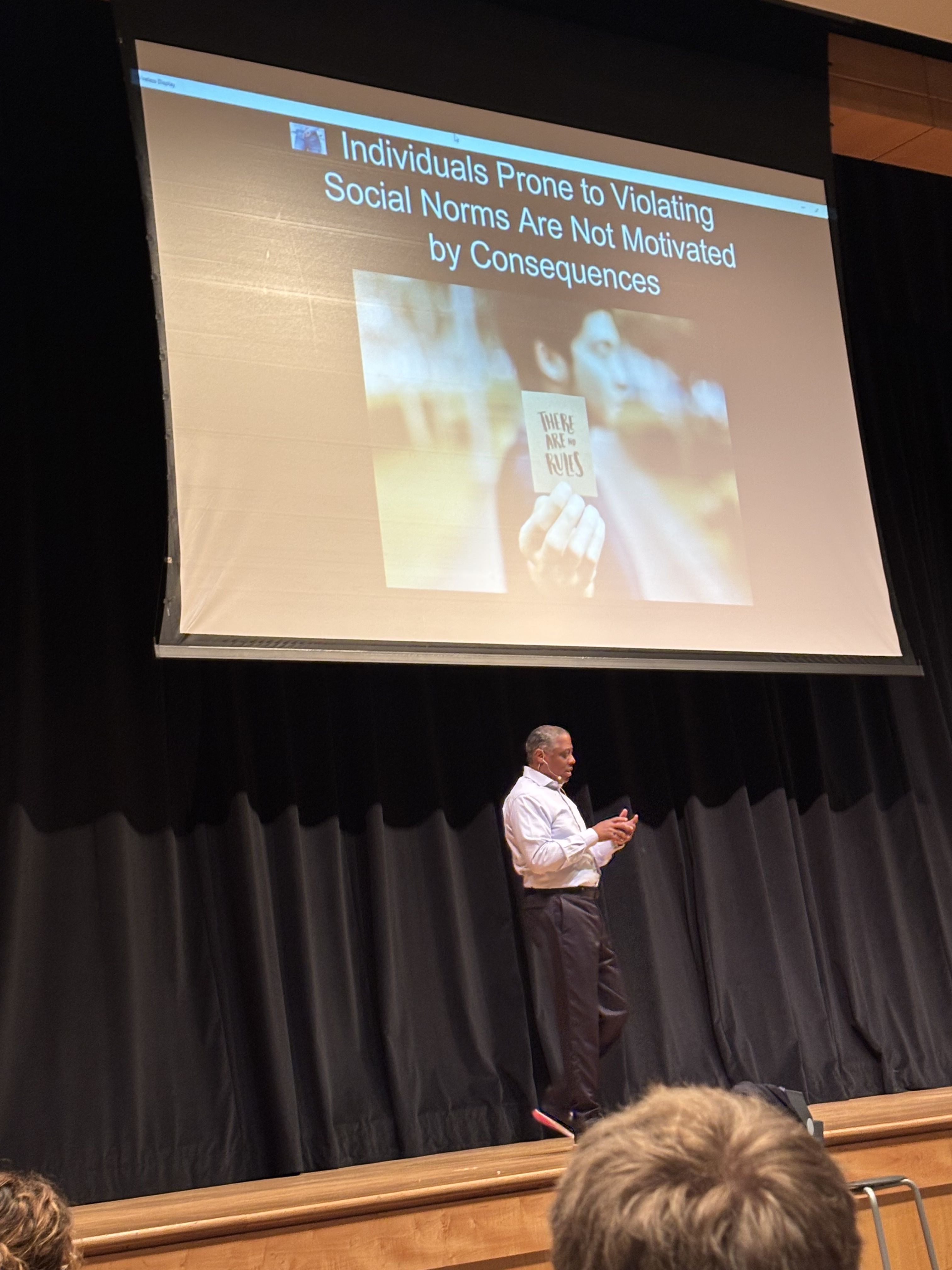
For those of us at CASA, our mission is clear: to advocate for children who have experienced abuse and neglect, ensuring their voices are heard and their futures are protected. We know, instinctively, that early trauma leaves a lasting mark. But what if we could understand how that mark is made, deep within the developing brain, and how it can, tragically, contribute to a pathway towards negative behavior?
On October 20th, Goochland Powhatan Community Services hosted Horacio Sanchez at Powhatan High School. This article focuses on the groundbreaking work of nuero-experts like Horacio Sanchez, with his focus on resiliency and applied neuroscience. One of the topics addressed yesterday in Horacio's presentation illuminates the profound connection between Adverse Childhood Experiences (ACEs) and the brain's development, providing a scientific lens through which to view the challenges faced by children in the child welfare system. Horacio emphasizes that repeated exposure to stress and trauma – the very definition of ACEs – doesn't just create emotional scars; it physically remodels the brain.
The Architecture of Trauma: How ACEs Reshape the Brain
Imagine the brain as a magnificent, complex city under construction. During childhood, this city is rapidly building its infrastructure: roads, communication networks, and critical decision-making centers. ACEs are like a series of devastating natural disasters hitting this city during its most vulnerable construction phases.
The Amygdala on Overdrive: The brain's "alarm system," the amygdala, becomes hypersensitive. For children experiencing ongoing trauma, this part of the brain is constantly on high alert, perceiving threats even when none exist. This leads to a persistent state of fear, anxiety, and hypervigilance – a survival mechanism that, while adaptive in a dangerous environment, becomes maladaptive in safer contexts.
A Weaker Prefrontal Cortex: The prefrontal cortex, the brain's "executive control center," is responsible for self-regulation, impulse control, planning, and understanding consequences. In children with significant ACEs, the development of this crucial area can be stunted. This means they struggle with precisely the skills needed to navigate complex social situations, manage strong emotions, and make sound decisions.
Impact on Memory and Learning: Chronic stress floods the brain with cortisol, a stress hormone that can damage the hippocampus, vital for memory formation and learning. This isn't just about forgetting facts; it can impair a child's ability to learn from past experiences, understand social cues, and develop empathy.
CASA's Role: Building Resilience, Rewiring Futures
Understanding the brain science behind trauma isn't about excusing behavior; it's about informing our intervention. It underscores the critical importance of CASA's work:
Consistent, Nurturing Relationships: A CASA volunteer provides a consistent, predictable, and supportive adult relationship – a vital ingredient in helping a child's brain heal and re-regulate. This stable presence can help calm the overactive amygdala and support the growth of the prefrontal cortex.
Advocating for Trauma-Informed Systems: We advocate for schools, foster homes, and community services that understand the impact of trauma and implement strategies that promote safety, predictability, and self-regulation – precisely what Sanchez champions.
Early Intervention: The younger a child experiences consistent, positive interventions, the greater the chance to mitigate the long-term neurological damage of ACEs. Our advocacy ensures children receive the therapeutic and educational support they desperately need.
Horacio Sanchez reminds us that the brain is remarkably plastic – it can change and heal. By understanding the neurological landscape shaped by trauma, we at CASA are better equipped to advocate for the environments and interventions that can literally help rewire a child's brain for resilience, self-regulation, and a future free from the cycle of violence and crime.
For more fascinating information on the brain-science behind human behavior, please check out this featured video of Horacio Sanchez speaking at the Learning and the Brain Conference at Premiere Speaker's Bureau.